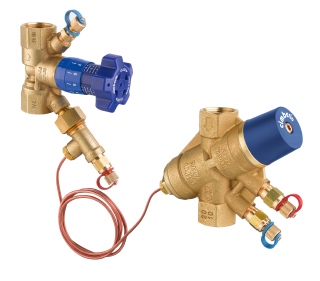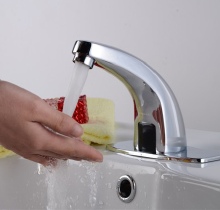Addressing that performance gap in buildings

What do the performance gap and uncomfortable buildings that are energy inefficient have in common. Paul Wightman of Albion Valves believes poorly balanced systems are often to blame.
It is widely accepted across the building-services industry that buildings on a whole do not perform as well as was anticipated at the design stage. The difference between anticipated and actual performance can be very significant.
As such, this is an area that is generating much public attention, especially in relation to carbon savings. According to Innovate UK, the Government’s innovation agency, the built environment accounts for 45% of total carbon emissions (27% from domestic buildings and 18% from non-domestic), with 73% of domestic emissions arising from space heating and the provision of hot water.
The overproduction of heating and hot water creates huge energy wastage and is something that crucially needs to be addressed at the design stage. Allowing human occupancy to be factored into the building’s overall energy consumption at an earlier stage will give the opportunity for contingency measures to be designed in.
Designers should consider using tamper-proof radiator valves to help maintain consistency of heating and ventilation. Lighting systems and taps with passive infra-red (PIR) sensors and controls which react to body heat and movement will also help eliminate wasted energy.
Simple systems can be put in place to help maintain the energy efficiency of a building and counteract the human contingent. Heating systems in public buildings such as office blocks, retail outlets, hotels, hospitals and schools come under much stress, with multiple variants potentially compromising the smooth running of a system.
Heating systems in commercial buildings must be designed to accommodate the movement of people, the use of electronic appliances, open windows and doors, and potentially individuals tampering with thermostatic controls.
A combination of all these factors contributes to an environment, that can be either too hot or too cold, and often with not enough ventilation, as well as causing huge inefficiencies in the heating system.
In a work environment poor temperature control can have the knock-on effect of poor performance. Overzealous use of heating as well as icy blasts from chilled-water units can be equally troublesome and uncomfortable for a workforce.
 |
| Control and balancing valves such as this PICV (pressure-independent control valve) are the key to energy-efficiency and comfortable buildings. |
To create a high-performance building with good energy-efficiency credentials and a comfortable environment in which to work or live, the focus for heating engineers should be on balance and control.
In engineering terms ‘T set’ is the desired room temperature we wish to be controlled exactly and perfectly at all times of year and throughout the day.
With poor balance and control the system swings become too great, which causes extreme temperatures in our environment and energy wastage.
A properly balanced variable-volume system can only be achieved with the correct set of dynamic balancing and control valves. These subsequently ensure the correct distribution of flow throughout the whole system, irrespective of any pressure changes or the partial system load that will inevitably occur for the vast majority of the building’s operational life.
If the correct balancing of the system is not established, there will be an unequal distribution of the flow so that there will be a surplus effect in some of the terminals, while not enough in others, consequently lowering the quality or comfort control.
The result of this will be that the desired heating or cooling will not be ensured in all parts of the installation.
One solution is the use of differential-pressure control valves (DPCVs), which has proved to be extremely efficient in helping to stabilise the temperature in heating systems.
The DPCV is set to maintain a steady differential pressure under dynamic balancing conditions, which ensures flow cannot exceed a desired rate. It helps reduce both energy consumption and the risk of noisy vibrating pipes, while simplifying the commissioning process.
In addition, thermostatic radiator valves (TRVs) are self-regulating; they control the water entering a radiator and ultimately help maintain a desired room temperature. TRVs come with tamper-proof temperature settings that are ideal for commercial environments.
 |
Similarly, in installations that require balance to be controlled in a specific location (for example, one point of delivery to a room) pressure-independent control balancing valves (PICVs) can be used. These are particularly effective on 4-pipe heating and chilled-water terminal units such as fan-coil units (FCUs) and air-handling units (AHUs); such units can overheat the space or emit chilly blasts when over-circulating chilled water in the system.
PICVs are recognised in the industry for improving energy savings by optimising the distribution of water in a heating or cooling system, so ultimately maintaining an intended temperature at optimum energy efficiency at minimum operating cost.
From the perspective of a design engineer, not only do they gain energy savings as a result of increased control and valve performance from the PICV, they also achieve reductions in design and calculation time.
As an industry we have a responsibility to help close the performance gap in our buildings and make energy efficiency a priority at design stage. It something that is achievable through well-thought-out design and by employing simple engineering techniques such as system balancing to ensure the equal and timely distribution of energy — all supported with the correctly specified equipment.
Paul Wightman is technical specifications manager with Albion Valves.







